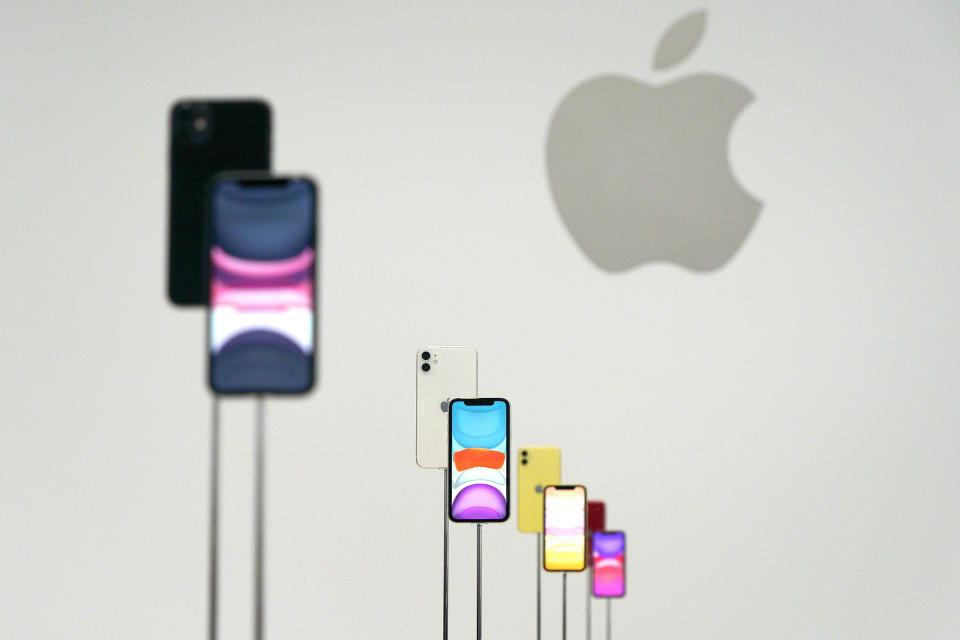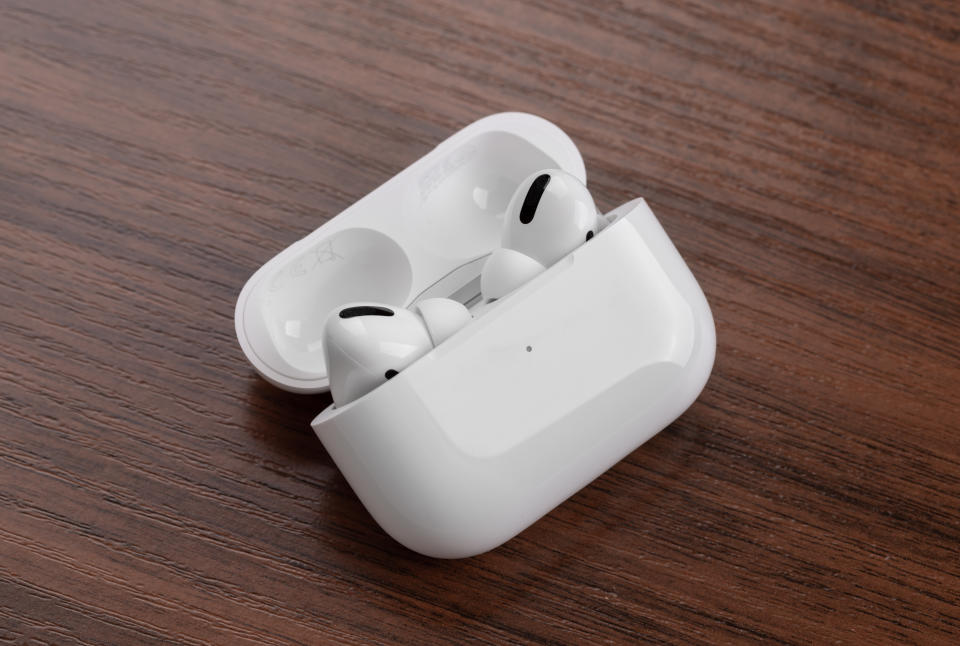Apple is in the midst of a bullish 'perfect storm'
Apple's big Q1 earnings beat on Tuesday is a story in two parts: the return of iPhone growth, and the continued performance of the company's wearables and accessories business.
The wearables and accessories side proved especially impressive in the quarter, with record revenue of $10 billion compared to $7.3 billion in the same quarter last year. And it doesn't look like Apple is ready to slow down anytime soon.
"Looking at the remainder of FY20, Apple (AAPL) is in the midst of a perfect storm, with current iPhone performing above plan, non-iPhone (especially wearables) trending strongly and growing anticipation for 5G iPhones that will be coming late in the fiscal year," Piper Sandler's Michael Olson wrote in his analyst report following Apple's earnings announcement.

iPhone 11 on fire
In the lead-up to the launch of the iPhone 11, expectations for the phone's sales performance were muted. The thinking was that consumers would hold out another year for a 5G-capable iPhone rather than upgrade to the 11. That reaction, however, appears to have been overblown, as the iPhone 11 helped iPhone sales return to growth in Q1 2020.
The phone helped the iPhone category reach sales of $56 billion in the quarter, quite a jump from $52 billion in the first quarter of 2019. Part of that, analysts say, can be attributed to Apple's financing and trade-in offers, which helped push consumers to upgrade.

The $699 iPhone 11, which is far less expensive than the $999 iPhone 11 Pro and $1,099 11 Pro Max, was the top-selling phone every week of the quarter. Seeing such enthusiasm for a low-cost iPhone should prove helpful for Apple, which is widely expected to launch a budget phone in March. That iPhone could pack the same processor as the iPhone 11, but would drop the FaceID scanner in favor of a fingerprint reader found on previous devices.
AirPods carry the day
Who would have thought that when Apple launched its AirPods that they would become so popular that customers would have to wait to receive them months after their release? Immediately after their announcement, users took to Twitter to mock the AirPods' initial design, and yet in Q1, CEO Tim Cook said the $249 AirPods Pro were in such demand they suffered from supply constraints.
"We had another incredible quarter, setting an all-time record in virtually every market we track around the world, and this product category is now the size of a Fortune 150 company," Cook said during Apple's earnings call. "Demand for AirPods continues to be phenomenal, particularly for our recently launched AirPods Pro, our new addition to the AirPods family that features active-noise cancellation."

For several quarters, analysts have said the only thing saving Apple from slowing iPhone sales was its services division. And while that has certainly grown at a rapid clip — it raked in $12.7 billion in the quarter compared to $10.9 billion in the same quarter last year — the accessories side shouldn't have been underestimated.
The Apple Watch continues to sell well, with the Apple Watch Series 3 now priced at just $199 compared to $399 for the Series 5, and the AirPods are likely to continue their impressive performance, as more consumers switch to truly-wireless earbuds from traditional wired units.
"We believe there is room for 20% plus wearables revenue growth over the next several years driven by both Watch and AirPods," Loop Ventures' Gene Munster wrote in his note following Apple's earnings release.
AirPods have just a 10% penetration rate of Apple's total addressable market, according to Munster. The Apple Watch, meanwhile, has captured just 8%, meaning there's still plenty of runway ahead for both devices.
The 5G future
Analysts are eagerly anticipating the launch of Apple's expected 5G-capable iPhone, assuming in many cases that it will lead to a new sales supercycle.
"We continue to believe that the combination of peaking replacement cycles, key improvements to the battery/cameras, wider availability of trade-in/financing options and new low-end iPhones in March are factors that will help sustain iPhone growth throughout FY20, while the introduction of a 5G device later this year serves as a follow-on catalyst that can accelerate iPhone growth in FY21," Morgan Stanley's Katy Huberty wrote after Apple's earnings announcement.
Munster also sees the potential for a 5G iPhone, though there could be initial blowback from consumers due to a slow rollout of 5G. "Apple’s business will be one of the biggest beneficiaries of a three-year lift from 5G and wearables,” he said, “along with optionality value from other upcoming unannounced products."
More from Dan:
Microsoft Q2 earnings: Beats on top and bottom line on strength of cloud
Apple earnings: Sales beat expectations led by iPhone and wearables
Elaine Chao describes people's biggest complaints about drones
Elaine Chao: We still haven’t identified operators of mystery drones in Colorado and Nebraska
Got a tip? Email Daniel Howley at [email protected] or [email protected], and follow him on Twitter at @DanielHowley.
Follow Yahoo Finance on Twitter, Facebook, Instagram, Flipboard, SmartNews, LinkedIn, YouTube, and reddit.
